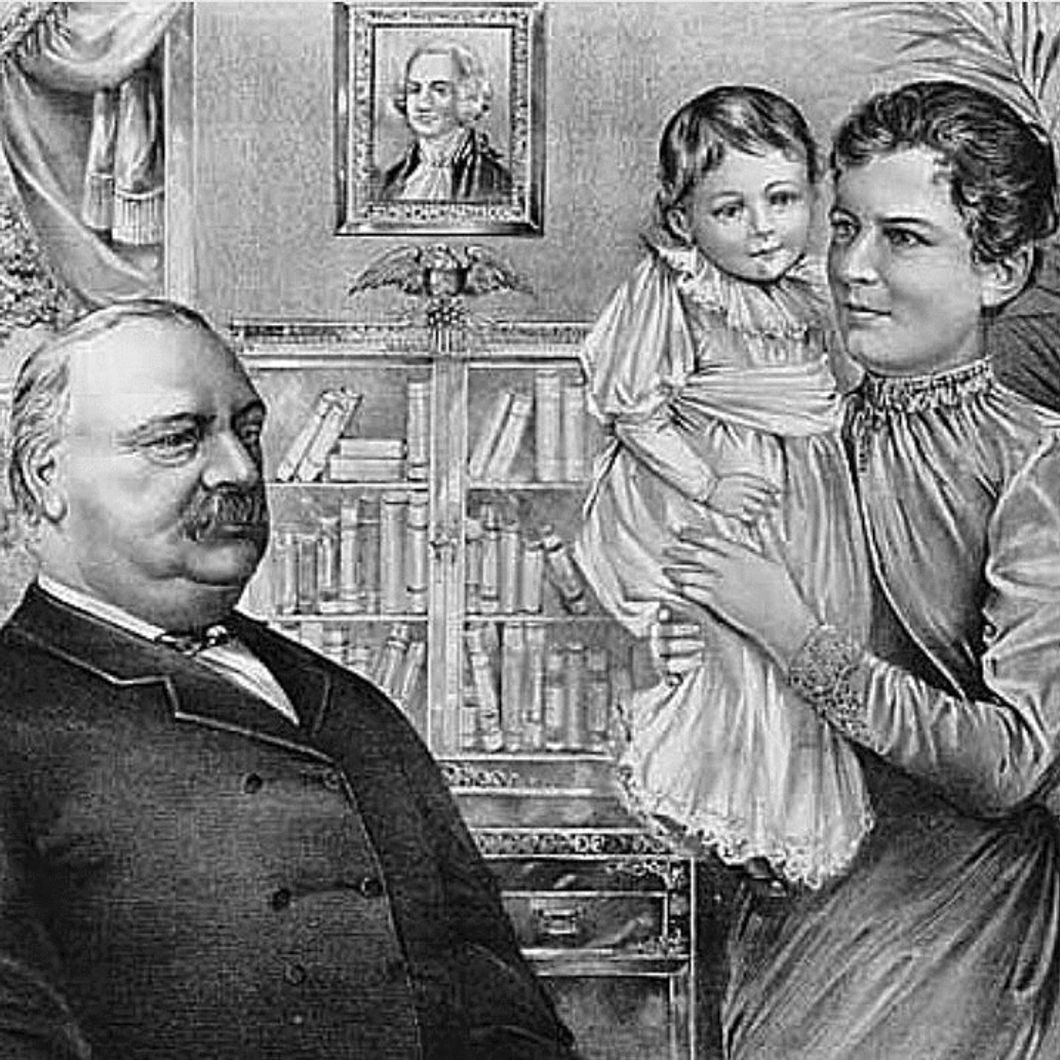Frances Folsom Cleveland married President Grover Cleveland in the middle of the second year of his first term. Known as "Frank" by family and friends, she was naïve, sensitive, and eager to please her husband. The media was mesmerized by this contrasting couple. Many described them as "Beauty and the Beast." And the Washington elite waited to see how Frank would settle into her position as First Lady. The president, however, did nothing to guide her in that regard.
Frank braved through the duties of the First Lady on her own, gave lavish receptions, and allowed the women of Washington Society to critique her manner and appearance with the ease of an experience debutant. The president was known as a micro-manager when it came to the state of the county, and this meant that Frank spent a great deal of time alone. At a trustee meeting at Wells College, Frank met Richard Watson Gilder, a poet, and editor. They became instant friends and she took him and his wife back to meet the president. Frank confided in Mr. and Mrs. Gilder of her boredom and at times discussed political views she never addressed with her husband.
President Cleveland believed a woman should not get involved in politics or have a political agenda, and certainly not his wife. Frank did not make political statements, but her popularity was used by the Administration as well as the Democratic National Committee whenever possible. Like the Kennedy's, the media began a campaign of spreading rumors of affairs and abuse. Democratic opponents of the President accused him of beating his wife and mother-in-law. This was the only time Frank made a formal statement to the media denying the allegations. As a result, this media hype was detrimental to the President's bid for a second term. Frank was so confident that her husband would return to the White House she told the staff to keep everything as is she would be back in four years.
Four years later, President Cleveland won the second term and they returned to the White House. They lived there in the same manner as previously, only during the "social season," and the rest of their time in a property they rented. Frank's role as the hostess was admired by everyone and she took this to be her job as the First Lady. Unfortunately, the President was diagnosed with jaw cancer during this time and with the country in economic turmoil the couple thought it best to mislead the country of his diagnosis and surgery and Frank played an important role in deceiving the press and public during his recovery. Unlike Edith Wilson, Frank did not choose to make any decisions on his behalf.
Not only was Frank the youngest First Lady, but she also the first to give birth to a child in the White House. The Cleveland's had five children, three daughters, and two sons. President Cleveland passed away in 1908 and Frank remarried an Art History Professor, Thomas J. Preston Jr., from Wells College less than five years later. She did not become politically active until the start of World War I when her husband became involved in the National Security League (NSL).
According to this site, "Although the former First Lady had avoided controversy throughout her public life, her work with the NSL proved otherwise. She suggested that Americans did not unite in support of a strong defense because of what she called the "huge percentage of the unassimilated population that cannot think or act together." The sense of psychological indoctrination and use of fear in classrooms to inculcate children seemed to cross a line within the ranks of the organization and Frances Cleveland Preston resigned from the organization on December 8, 1919. Equally controversial was her contention that women were yet intelligent enough to vote and when they were given the vote, were not successful in politics and should instead focus their civic activities on welfare charities. In May of 1913, she was elected as vice president of the New Jersey Association Opposed to Woman's Suffrage and served as the president for the Princeton chapter.
Frances Folsom Cleveland was a statuesque woman with charisma and personality, she was an educated woman and traveled to many countries before becoming First Lady at such a young age. She made no attempt to persuade policy as the First Lady. She did charitable work on occasion, she had an opportunity to change the course of women's rights but chose to stay the course alongside her husband and let her greatest accomplishment as the youngest First Lady be her image and style.







 Christmas and New Year gift card
Photo by
Christmas and New Year gift card
Photo by  butter cookies on plate
Photo by
butter cookies on plate
Photo by  boy holding Holy
boy holding Holy 









